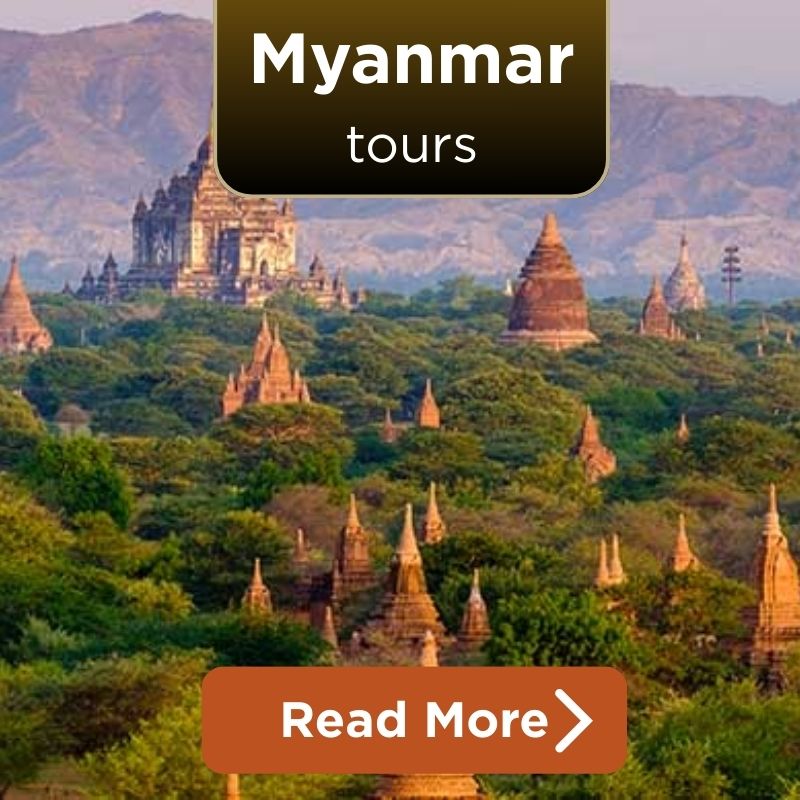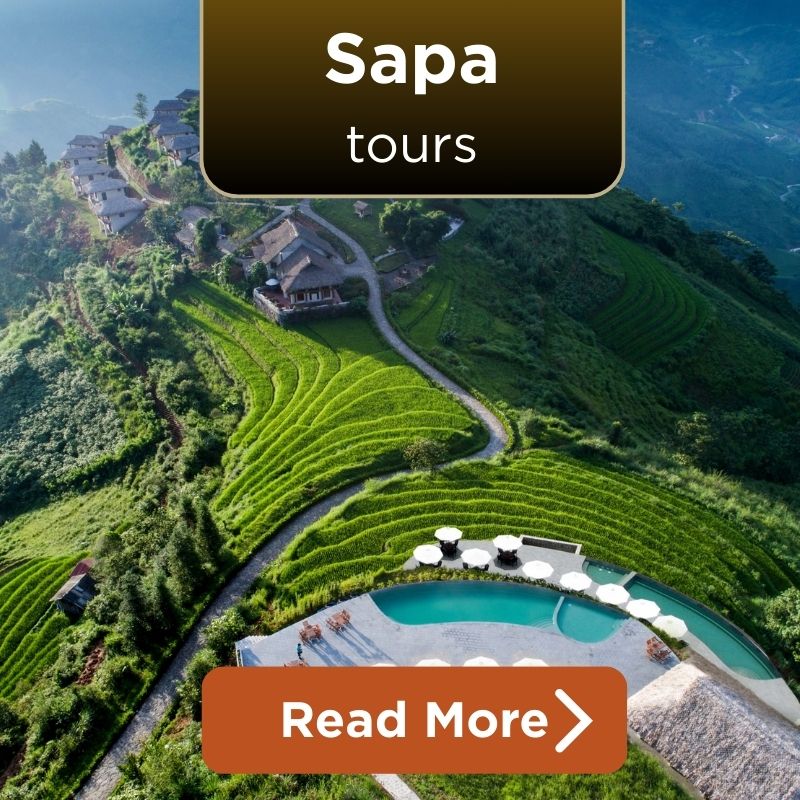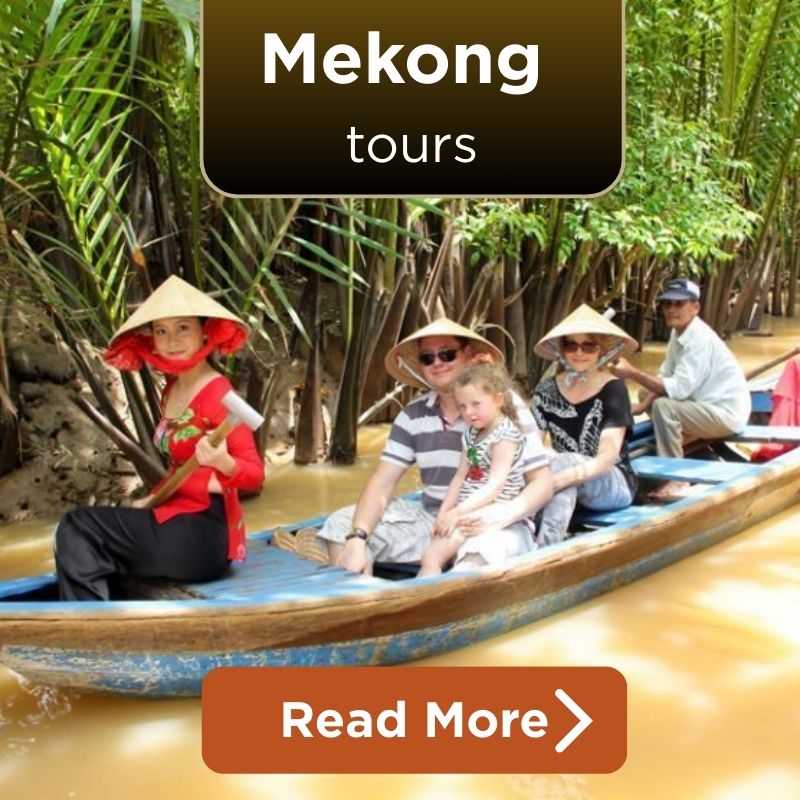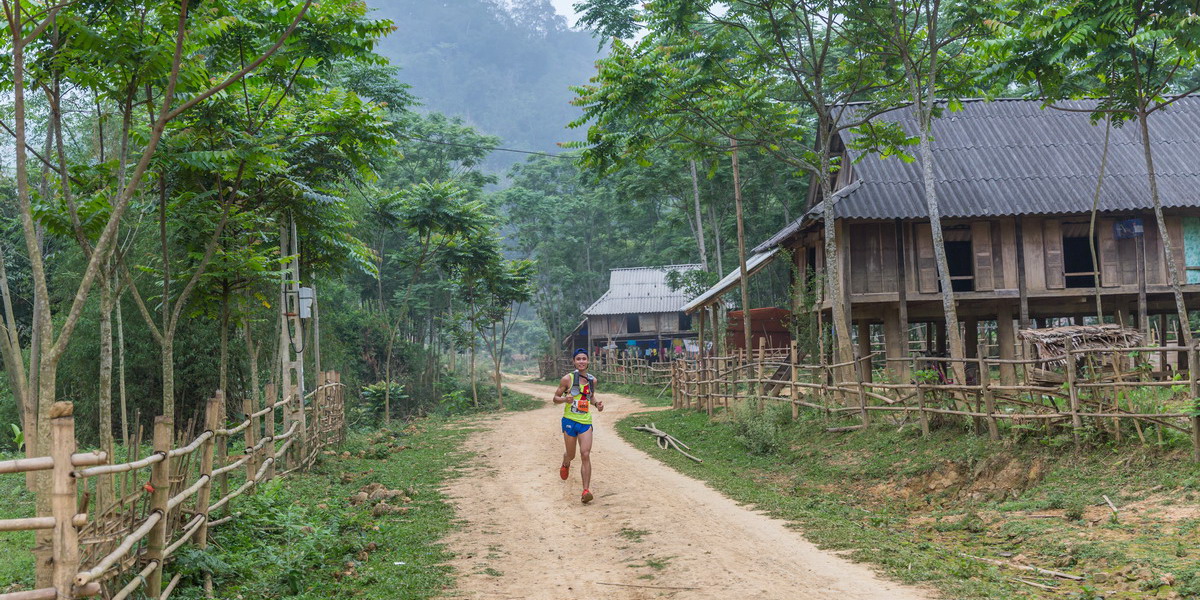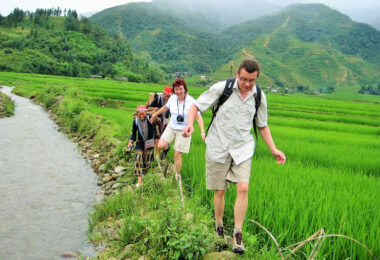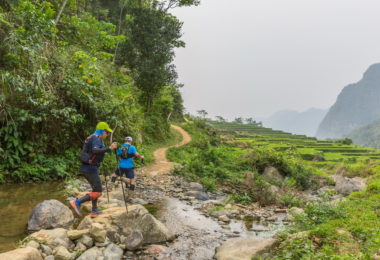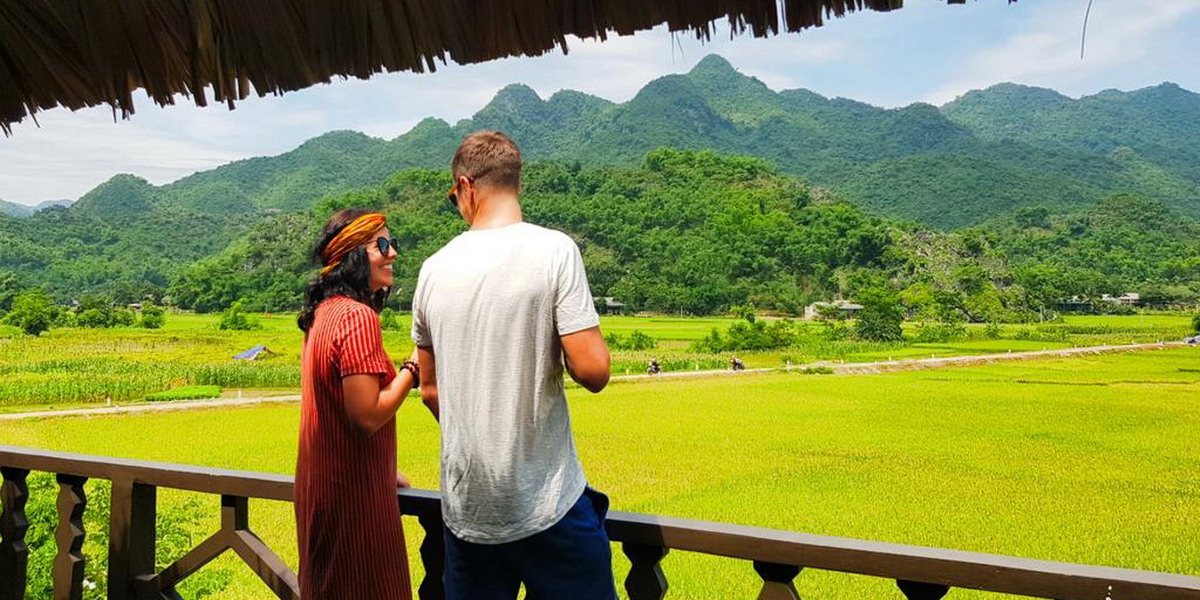Pu Luong Nature Reserve is considered an undiscovered gem that allows visitors to experience the symphony of nature and culture. It hosts many attractions, but the ancient waterwheels uniquely count as a wonder of traditional engineering, testifying to the ingenuity of the local Muong and Thai communities. These waterwheels, distributed here and there all over the streams and rivers, serve yet another practical purpose: adding some pretty charm to the already beautiful scene of Pu Luong. In this article, we bring to light some of these structural details and the experiential immersion that awaits those who go on a tour to explore ancient waterwheels in Pu Luong tour.
The Structure and Function of Waterwheels

Ancient water wheel in Pu Luong
Design and Construction
The ancient waterwheels in Pu Luong tour have characteristics of simplicity and practicality, showing the ingenuity of the Muong and Thai people. Each waterwheel is designed with a large, circular frame of locally available bamboo and wood. Construction is meticulous, the process demanding skill to guarantee strength and serviceability. The frame is further reinforced with crossbars onto which are fixed smaller bamboo tubes—the paddles—around the circumference. The role of these paddles in the operation of the wheel is quite essential.
Working Mechanism
It is very simple but overly effective, the way the ancient waterwheels work. The resultant fill of paddles with water from the stream makes the wheel turn. The lifting process of the turning raises water from the river into an elevated trough, where the water is channeled towards the rice fields. This means that the wheel continues to be in motion because of the continual flow coming from the stream and, therefore, a constant supply of water. This system does more than watering the fields; it also manifests a brilliant use of natural resources to support agricultural practices.
Scientific Principles
The very reason these water wheels work is because of the basic laws of physics. The kinetic energy of flowing water is converted to mechanical energy, which makes the wheel roll. The weight of the water contained in the paddles creates a turning force, so the wheel can carry the water to an elevated level. This is also an efficient and environmentally friendly way of lifting water, as it doesn’t have to use artificial forms of energy other than the natural stream flow. The need for a lot of scrutiny in the design of the paddles and the angle at which they are attached to the wheel cannot be overemphasized in seeing that the balance and efficiency of the water wheel are maintained. These forms of ancient waterwheels stamp the innovative spirit of the local communities. This demonstrates their perfect comprehension of the environment and sustainable agriculture. One visiting the ancient water wheels at Pu Luong Tours is exposed to a lot, not only technically but also culturally and historically.
Experiencing the ancient waterwheels in Pu Luong tour
Scenic Beauty
The ancient waterwheels in Pu Luong tour come within a setting of the most breathtaking natural beauty, enclosed in the embrace of great green forests, terraced rice fields, and meandering streams—the presentation of the waterwheels is so appealing, peaceable yet captivating. Set among the splendor of this breathtaking natural beauty, the waterwheels remain calm. Endowed with mild power, the wheels offer a very peaceful picture against the background of these massive mountains. This is an ideal setting for visitors who wish to escape from the hustle and bustle of the city and be one with nature.
Best Times to Visit
One needs to time their visit well to realize the beauty exuded by these ancient waterwheels in Pu Luong. It’s best to visit during the early hours between 6:00 AM and 9:00 AM or in the late afternoon from 4:00 PM to 6:00 PM when the golden light just brings a dramatic view to the natural landscape, which is ideal for photography and great sightseeing. Furthermore, the months of October to April, during the dry period, clearly afford the best time with greater accessibility to the trails. The rice-planting and harvesting seasons also occur during this period, allowing a unique view of the agricultural activities supported by the waterwheels.
Photography Tips
With some practical tips and a keen eye, you will capture the essence of ancient waterwheels in Pu Luong tour. Here are a few:
- Golden Hour Lighting: Take your photos in the light of early morning or late afternoon to capture the waterwheels in the very best lighting. The soft and warm tones do have a magical effect on the natural beauty of the scene.
- Composition: Frame your shots in a rule of thirds formula. Place the water wheels off-center in the frame so that it will be a big help in making a composition speak volumes with dynamism. You can easily add context and depth by including surrounding landscapes in your photos.
- Close-ups and Wide Shots: Try a mixture of close-up shots that will show off details in the waterwheels and wide-angle shots that will show off the surrounding landscape. This will give a well-rounded visual story of your visit.
- Reflections and Movement: Look for opportunities to capture reflections of the waterwheels in the streams and use slower shutter speeds to convey the movement of the rotating wheels.
Activities Around the Waterwheels

People live at the ancient water wheel
Guided Tours
A trip to explore ancient waterwheels – one of the two-day walking routes that Impress Travel offers. The trips are often with expert local guides who give insights into the history, method, and culture surrounding ancient waterwheels. A standard tour will take you to a few known waterwheels, with the guide explaining how they work and even showing them in action. Moreover, guided tours usually make a few visits to surrounding villages where visitors have the opportunity to discover traditional agricultural methods and the daily routine of area Muong and Thai groups.
Local Interactions
One of the key highlights when partaking in a Pu Luong trek is cultural exchanges among villagers. These people have a long tradition and always admire the people to come where they introduce their culture and lifestyle. Daily activities: planting rice, fishing, or even helping to maintain the waterwheels. Interactions offer insights into the cultural heritage and sustainable practices bushed Pu Luong for generations.
Trekking and Nature Walks
The region surrounding the ancient waterwheels in Pu Luong tour has lots of trails for trekking or nature walks. These vary from nice, easy walks that are perfect for all the family to much longer and more challenging hikes if you like an adventure. Hiking in the emerald green forests and on terraced fields grants tourists a panoramic view of the stunning natural beauty in Pu Luong. This is perfect for the outdoor nature lover as you travel through numerous plants, animals, and scenic views coming across some of the nicest waterfalls you may have ever seen or discovering entirely new vibrant villages. To get the full experience consider multi-day trekking tours that have overnight stays in local stilt houses.
Cultural and Culinary Experiences
Local Cuisine
A definite highlight of a Pu Luong tour of ancient waterwheels is your chance to enjoy the great local cuisine. Their specialties reflect centuries of culinary arts tradition between the Muong and Thai communities, with delicate flavors expressing themselves in every bite. Must-try dishes include Cổ Lũng duck, known for its tender and fragrant meat, and lợn cắp nách (grilled pork) marinated in local spices and well-grilled. Another favorite is cá nướng, fish fresh out of the river, barbecued on an open fire. Accompanied by sticky rice and a plethora of local vegetables, these dishes authentically represent the food in this part of Laos. Eating by the waterwheels with natural sounds and stunning scenes creates a unique culinary experience in your Pu Luong tour!
Traditional Attire
If you want to get into the cultural holiday spirit, consider hiring traditional Mường or Thái costumes. Made with handwoven fabrics featuring traditional patterns, these finely made outfits illustrate the long-held tradition of local communities. One feature of Pu Luong tours that adds an extra layer of authenticity to your visit to these ancient waterwheels is wearing traditional garb. You will not only get some good photos of the scenery around you, but it also gives you the chance to talk with some locals. Local shops and tour operators rent these garments, making it very convenient for tourists to dress up in accepted local fashion trends.
Community Activities
Another facet of Pu Luong tours that makes them all the more enriching is community activities. Guests can participate in operations such as rice planting, and harvesting, and even work on the upkeep of waterwheels. These interactive experiences offer a glimpse into the traditional lifestyles of the Muong and Thai people, as well as their sustainable agricultural practices. Additionally, local festivals and cultural events often coincide with peak tourist seasons, providing excellent opportunities to see traditional dance forms, music performances, and handicraft displays. Partaking in these communal activities will not only enhance your travel experience but also guarantee that you are helping to conserve Pu Luong’s culture and increasing awareness of its wonderful cultural background.
Practical Information for Travelers

Tourists visit and take photos
How to Get There
There are fewer complications involved in reaching the traditional water wheels on Pu Luong tours, but a bit of smart planning is needed. You can get there from Hanoi by taking a bus or driving with private cars. The journey generally lasts 4 and a half hours, covering a distance of about 160 kilometers. Buses from several major bus stations in Hanoi go directly to Thanh Hoa (e.g., Giap Bat and My Dinh). Check out this private car hire option for a more comfortable ride, or join our guided tour, which includes transportation in and around town! For more adventurous travelers, you can even rent a motorbike and enjoy scenic routes at your leisure.
Accommodation Options
Prices for Pu Luong Tours are available at a variety of price points and should meet most budgets, but the exact cost will depend on details. For more luxurious travelers, options like Pu Luong Retreat or Pu Luong Eco Garden with 4-star accommodation and views are available. For travelers who prefer comfort (of a high quality) near the nature of this eco-friendly resort, it’s just what you are looking for. Mid-range Pu Luong Nature Lodge provides decent rooms with basic commodities for a price that falls within the affordability bracket. Street food is excellent and affordable, and homestays in local villages offer some authentic experiences where you can stay with a local family and learn how they go about their daily lives. Being affordable, these homestays become a unique cultural immersion.
Pu Luong Tours offers a range of accommodation options to suit different budgets and preferences:
Luxury Stays
Pu Luong Tours promise a great many kinds of accommodation. Pu Luong Retreat for luxury and Pu Village retreat with fantastic facilities give you the most comfortable stay, nice rooms, and beautiful views. Eco resorts are the best accommodation options for travelers who want to relax in luxury while reconnecting with nature. For mid-range visitors, the eco-friendly Pu Luong Nature Lodge has a few comfortable rooms with all necessary facilities at an acceptable cost.
- Pu Luong Retreat
- Address: Don Village, Thanh Lam Commune, Ba Thuoc District, Thanh Hoa Province.
- Features: Stunning mountain views, infinity pool, on-site restaurant, and eco-friendly design.
- Pu Luong Eco Garden
- Address: Don Village, Thanh Lam Commune, Ba Thuoc District, Thanh Hoa Province.
- Features: Eco-friendly accommodations, beautiful garden, outdoor pool, and traditional Vietnamese cuisine.
Mid-Range Options
Experience local village life by staying with families in nearby villages, ideal for budget travelers who are looking for an authentic experience. Not only are the homestays affordable, but they also provide you with a complete cultural experience.
- Pu Luong Nature Lodge
- Address: Don Village, Thanh Lam Commune, Ba Thuoc District, Thanh Hoa Province.
- Features: Cozy rooms, scenic views, on-site dining, and local cultural activities.

Peaceful scene at the ancient water wheel
Conclusion
While you explore these ancient waterwheels in Pu Luong tour, it is definitely a well-learned history combined with nature and adventure. In this article, we took a close look at the cogs and wheels that move water from one part of an irrigation system to another, and when it is best to go in order to not miss out on all these activities. We’ve done a lot in providing an inside look at the local cuisine, traditional attire, and commdeepen our that open up insights into Muong and Thai culture. Travel tips tell you how to get there and where to stay, saving you time on planning your trip so that it is more restful. Don’t forget to regularly follow our Impress Travel for more interesting information about traveling Pu Luong to and to book Pu Luong Tours at the best prices.









